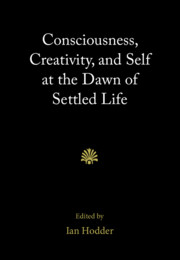Book contents
- Consciousness, Creativity, and Self at the Dawn of Settled Life
- Consciousness, Creativity, and Self at the Dawn of Settled Life
- Copyright page
- Contents
- Contributors
- Acknowledgments
- Part I Introduction to the Themes, Site, and Region
- Part II Higher Levels of Consciousness
- Part III Greater Innovation and Creativity
- 7 The Meronomic Model of Cognitive Change and Its Application to Neolithic Çatalhöyük
- 8 Containers and Creativity in the Late Neolithic Upper Mesopotamian
- 9 Creativity and Innovation in the Geometric Wall Paintings at Çatalhöyük
- Part IV Greater Awareness of an Integrated Personal Self
- Notes
- Index
- References
9 - Creativity and Innovation in the Geometric Wall Paintings at Çatalhöyük
from Part III - Greater Innovation and Creativity
Published online by Cambridge University Press: 22 February 2020
- Consciousness, Creativity, and Self at the Dawn of Settled Life
- Consciousness, Creativity, and Self at the Dawn of Settled Life
- Copyright page
- Contents
- Contributors
- Acknowledgments
- Part I Introduction to the Themes, Site, and Region
- Part II Higher Levels of Consciousness
- Part III Greater Innovation and Creativity
- 7 The Meronomic Model of Cognitive Change and Its Application to Neolithic Çatalhöyük
- 8 Containers and Creativity in the Late Neolithic Upper Mesopotamian
- 9 Creativity and Innovation in the Geometric Wall Paintings at Çatalhöyük
- Part IV Greater Awareness of an Integrated Personal Self
- Notes
- Index
- References
Summary
One of the paradoxes of Çatalhöyük is that every time we excavate a new house we know approximately what we will find: we know roughly where the hearth and oven will be, where the burials will be, where the ladder entry will be, how much plaster will be on the main room and side-room walls, where we will find obsidian caches, and so on. And as we empty out the fill and come down onto the floors we always do find more or less what we are expecting. The rules are always followed to some degree: the northern floors are clean and white, the southern mixed with residues of cooking and production, whole pots are never found in burials, neither are whole animals. And yet, at the same time, every house is different; we are always surprised by the specifics of how things are arranged. A human body is found sprawled on a house floor, with its head removed, a sheep is found in a burial (although not quite because separated from the human body by a mat), in some cases we find the oven moved to the north part of the main room. The paradox of Çatalhöyük is that it stands out from many other sites because of the strict rule-bound repetition of houses tightly packed together in apparent conformity and order, while at the same time the site stands out as one of the great early flowerings of human creativity.
- Type
- Chapter
- Information
- Consciousness, Creativity, and Self at the Dawn of Settled Life , pp. 190 - 206Publisher: Cambridge University PressPrint publication year: 2020



